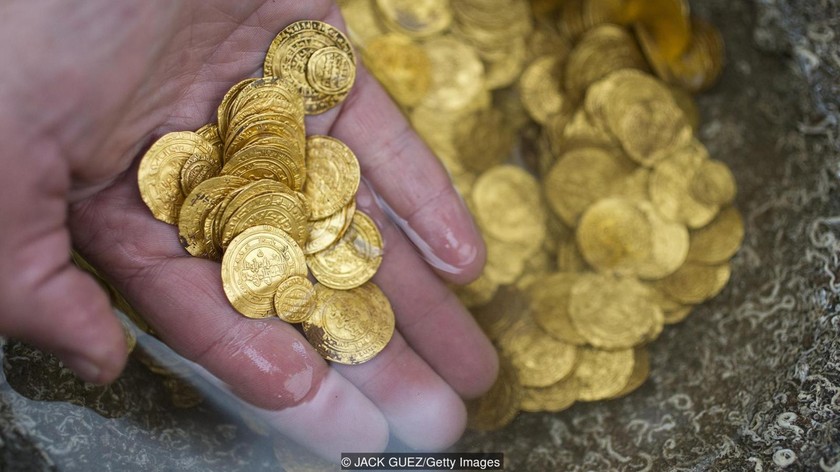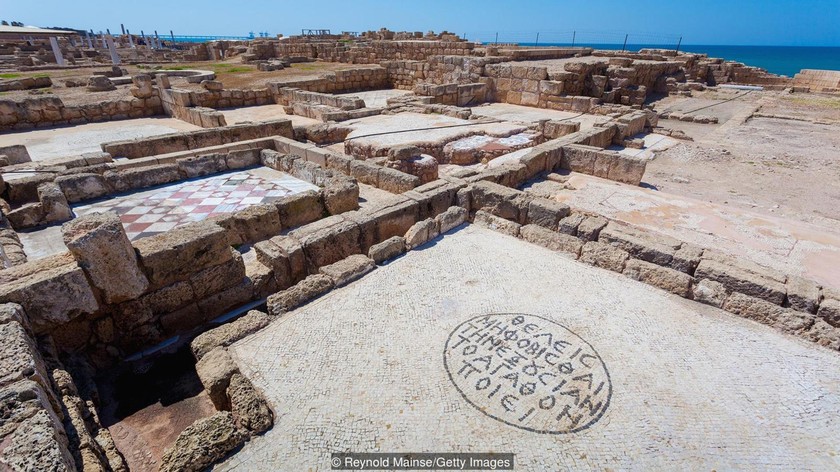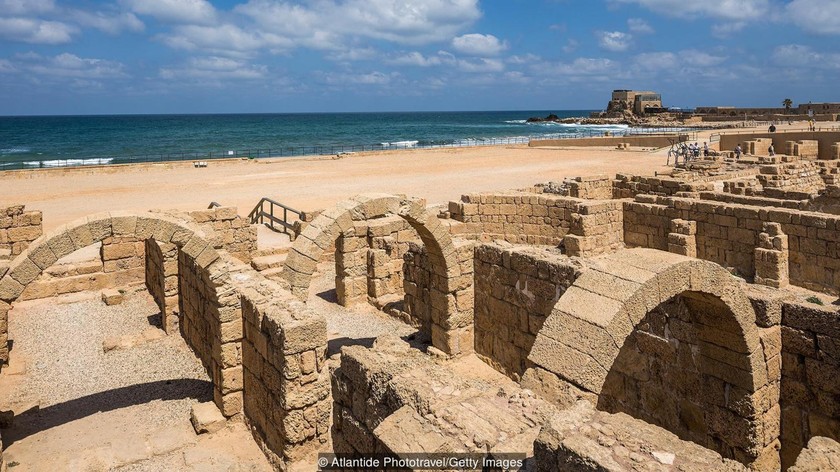Beneath the waves of the Mediterranean, off the shores of Caesarea, Israel, lies one of the most significant treasures ever discovered on this historic coast. The story begins on a misty morning in February 2015, when Mr. Zvika Fayer, a seasoned scuba diver and passionate underwater enthusiast, embarked on a dive near the port town.
The underwater terrain had undergone a transformation due to a winter storm that had swept through Caesarea, reshaping the seabed. It was amidst this altered landscape that Mr. Fayer and his companions were drawn to a glimmer beneath the sea sand – a sparkling light that revealed itself as 2,000 gold coins.
Initially dismissing them as perhaps counterfeit, the diving team cautiously plucked a few coins for closer inspection, only to be astonished by their authenticity. “I was surprised when I discovered these gold coins,” Mr. Zvika Fayer exclaimed.
Caesarea, known for its underwater archaeological sites, holds a special place in the hearts of diving enthusiasts, including Mr. Fayer. The government’s openness to allow amateur divers to explore the underwater ruins contributes to the allure of this coastal region. Mr. Fayer, having dived here numerous times, recounts encounters with large fish, ancient artifacts, and pottery strewn across the ocean floor.
The discovery of these 2,000 gold coins adds another layer to the rich tapestry of Israel’s maritime history, bringing to light a treasure trove hidden for centuries beneath the azure waves of the Mediterranean.

In the vast expanse of the Mediterranean Sea, a remarkable find emerged as Zvika Fayer, an intrepid explorer, unearthed more than 2,000 gold coins nestled beneath the waves. Unlike the conventional narrative of a fortunate discoverer laying claim to a newfound treasure, Fayer exemplified a different ethos. Swiftly returning to his boat, he contacted the Israel Antiquities Authority (IAA) without hesitation, urging their prompt presence at the site. Recognizing the significance of the discovery, the IAA opted to conduct extensive surveys in the area, seeking to unravel the mysteries surrounding this underwater treasure.
Collaborating closely with the IAA, Fayer embarked on days of underwater exploration, meticulously collecting over 2,000 gold coins. These artifacts, all 24 karats with a purity of up to 95%, lay undisturbed in the Mediterranean Sea for approximately 1,000 years. Beyond their intrinsic value, these coins serve as invaluable historical markers, shedding light on a hitherto overlooked or poorly understood historical epoch.
Archaeologists in Israel deem this find as “priceless,” both in its physical and intellectual dimensions. The gold coins, now state-owned national property, hold no material value for the divers involved in the discovery, emphasizing the altruistic nature of their pursuit.
Robert Kool, an authority on antiquities with the Israel Antiquities Authority, affirmed the exceptional condition of the ancient coins. Their preservation on the seabed near Caesarea, an ancient Roman port in the Eastern Mediterranean, is attributed to the optimal conditions. “They are completely clean and very new despite being on the seabed for more than a millennium,” remarked Kool, underscoring the remarkable state of preservation that offers a glimpse into an ancient world lost to time.”


Within the confines of Caesarea, both beneath the sea and above its ancient soil, lie remnants of a bygone era, bearing witness to the rise and fall of empires. The genesis of this coastal city dates back to the 4th century BC when the initial structures were erected to forge a bustling trading post. In 96 BC, the city met ruin at the hands of the Egyptian queen Cleopatra, only to be resurrected under Roman rule.
Renamed Straton’s Tower, the city was entrusted to the hands of Herod the Great, a Roman-appointed king of the region. Under his ambitious reign, Caesarea underwent a transformation into a flourishing port city, paying homage to the Roman Emperor Caesar Augustus.
Herod’s grand vision materialized in the construction of formidable walls enclosing a vast seaport, accompanied by aqueducts that catered to the needs of over 100,000 inhabitants. The horse racing arena, a testament to architectural brilliance, featured an oval-shaped track with intricately designed wooden steps, stairs, and corridors for swift exits. A sprawling square, boasting 3,500 seats, served as both a spectator’s arena and the grim stage for numerous executions. Adjacent to it stood temples, markets, public saunas, and a domed theater capable of hosting 20,000 people for horse races and gladiatorial battles.
By 6 AD, Caesarea had ascended to become the capital of Roman Judea, becoming the residence of renowned Roman governors, including Pontius Pilate, a figure etched into the historical narrative of Jesus’ time. Weathering the storm of Jewish rebellion between AD 66-70 and the subsequent destruction of Jerusalem, Caesarea retained its prominence as the political and economic epicenter of the region.”